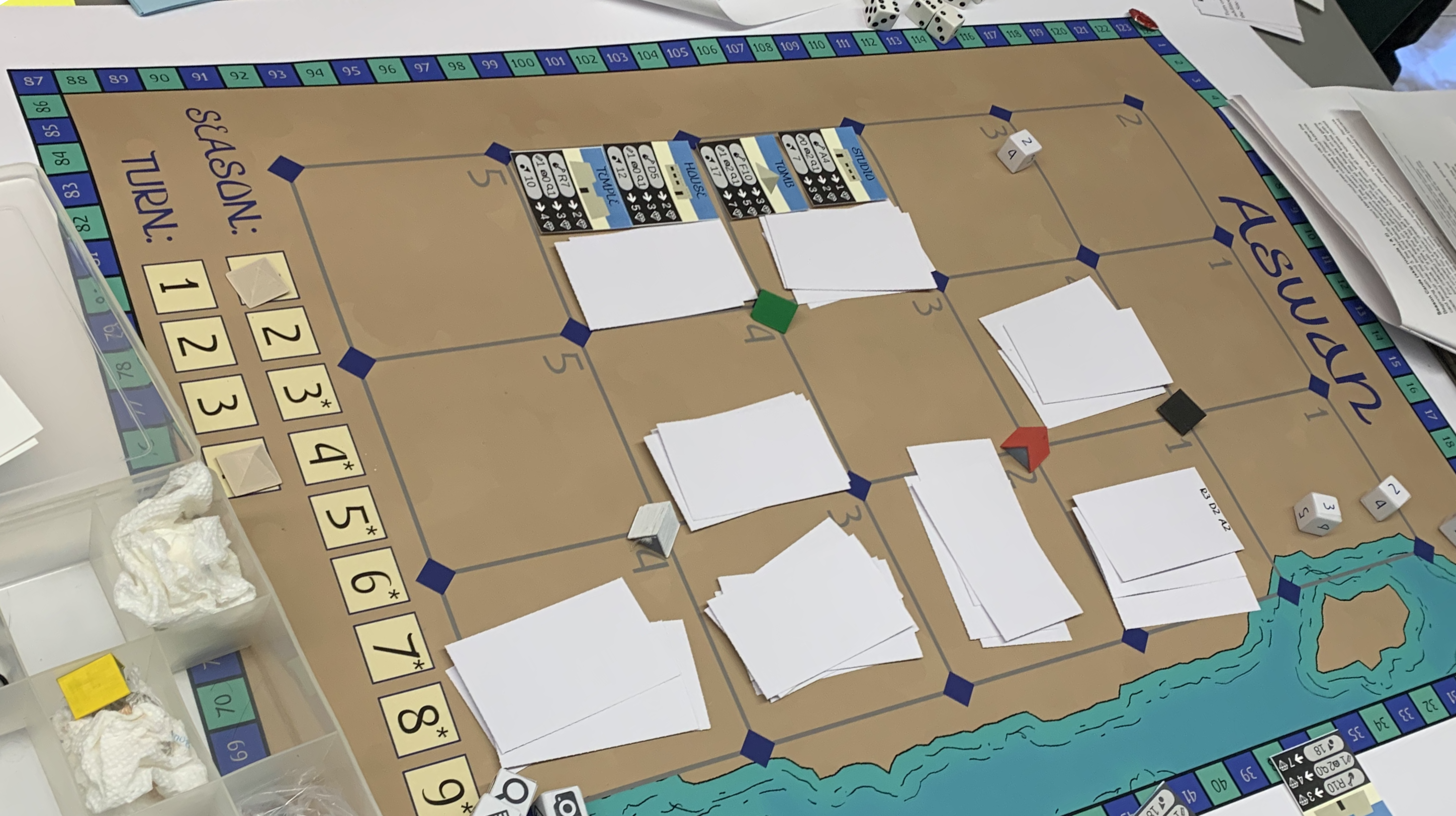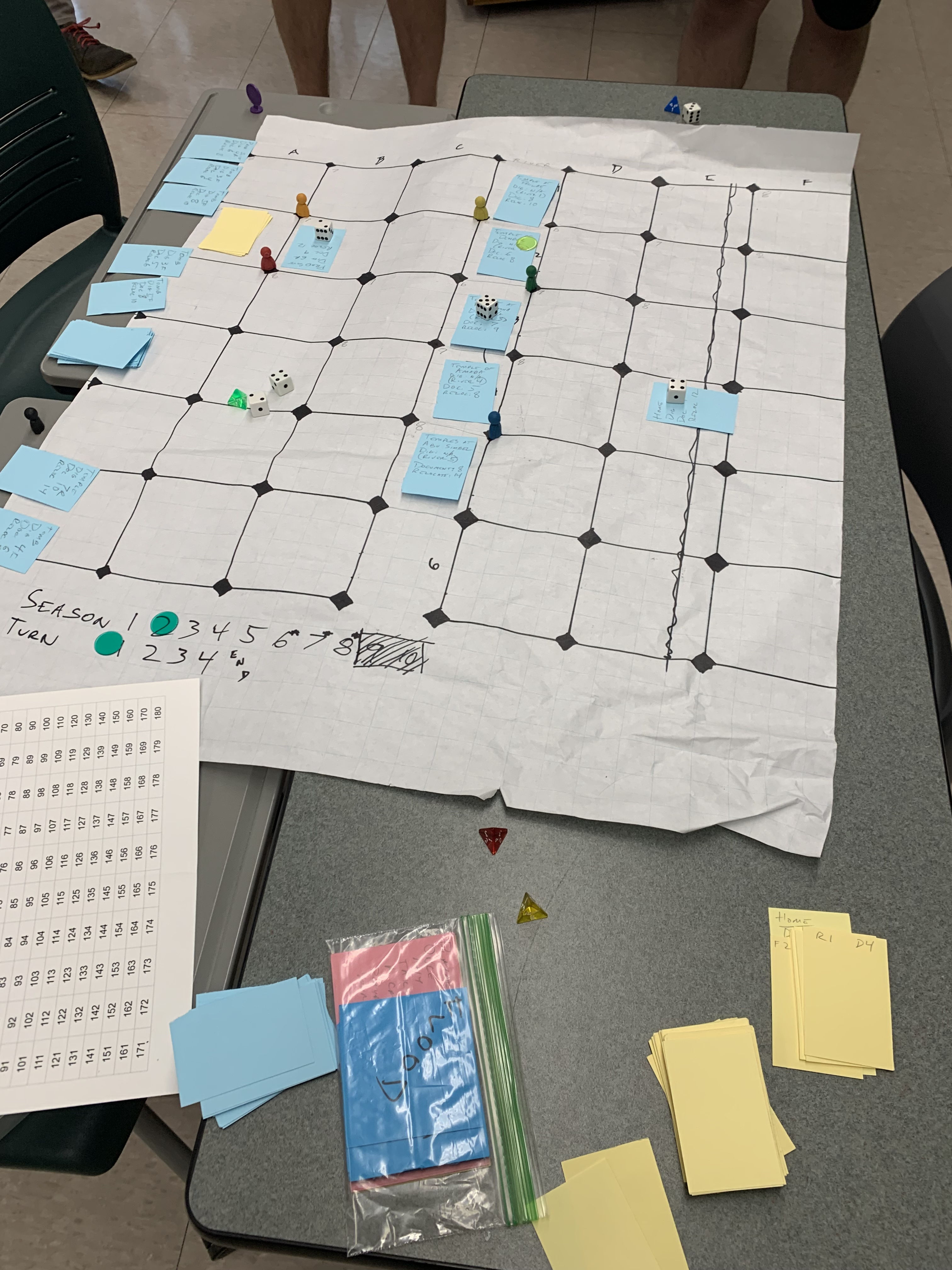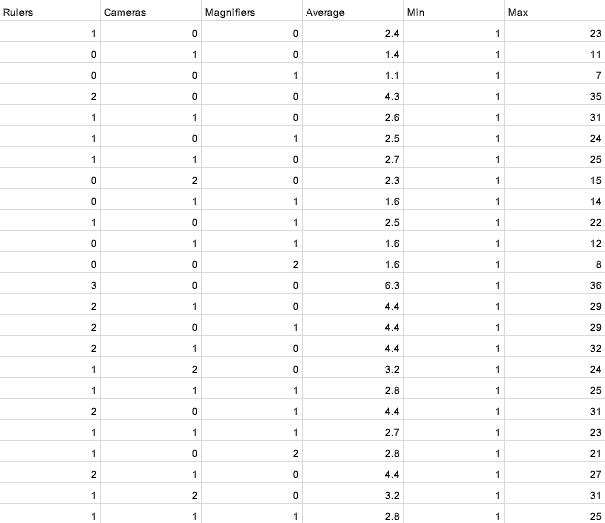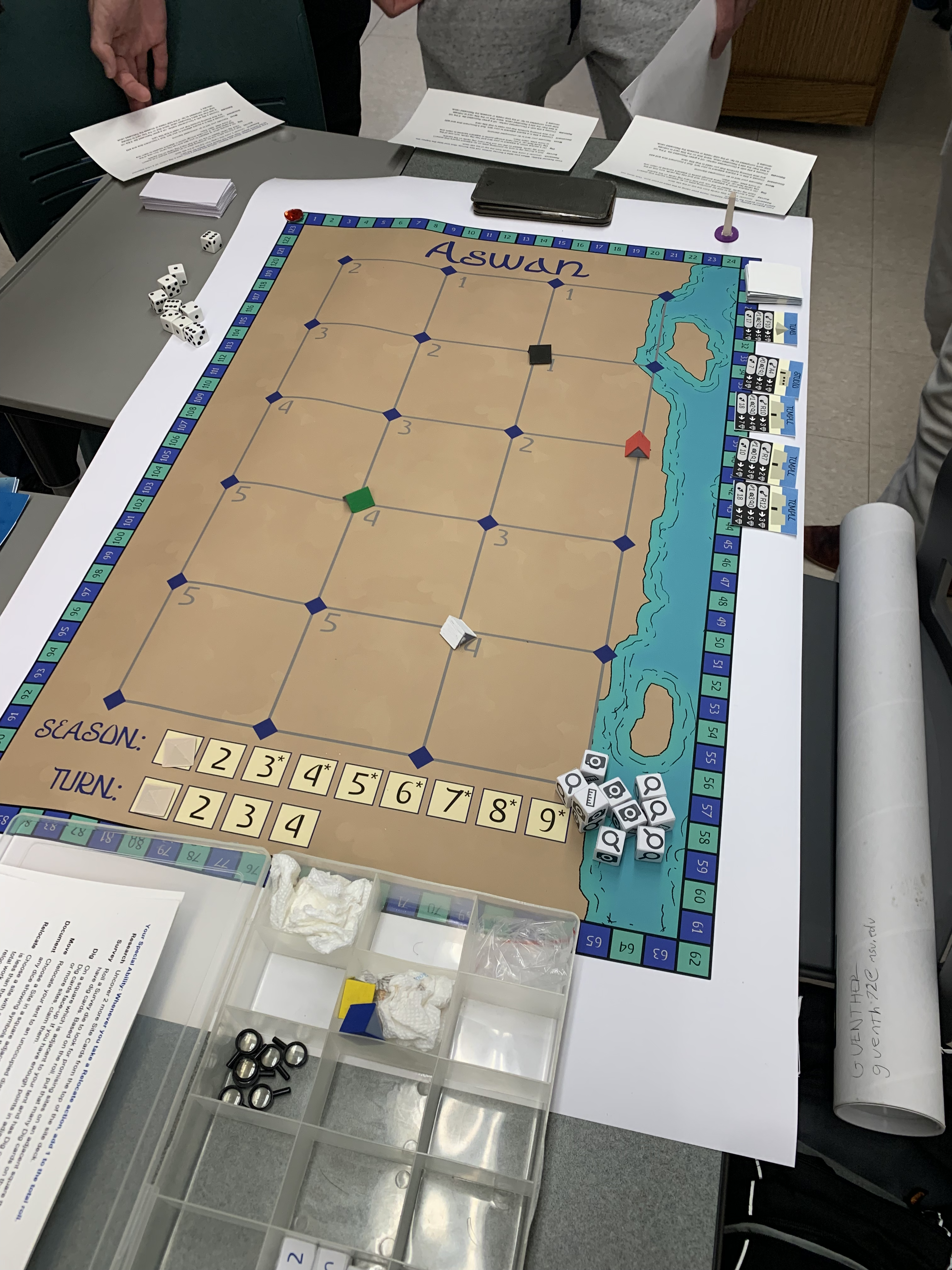Aswan

Project Details
My Contributions
- Created and iterated systems & mechanics
- Balanced gameplay by creating easy, medium, and hard challenges
- Conducted user tests; collected, prioritized, and acted upon feedback
- Designed look and feel of all elements of the game
- Crafted graphics and selected icons for board, cards, and chips
- Modeled and 3D printed game tokens
- Created templates for automated generation of cards and tokens
Summary
The construction of the Aswan High Dam created an archaeological crisis, as the artificial lake it was to create would engulf a large area rich in a variety of ancient sites. In 1960, UNESCO put out an international appeal to archaeologists to excavate, record, and relocate hundreds of sites in southern Egypt and northern Sudan. This effort resulted in the documentation and preservation of an incredible number of sites and artifacts; two of the most well-known cases are the Great Temple of Abu Simbel which was relocated to the shore of the new lake, and the Temple of Dendur which was given to the United States in gratitude for their role in the effort and relocated to the Metropolitan Museum of Art in New York City.
The board game Aswan teaches students about the archaeological process using the Aswan rescue operation as a context. Rather than tying gameplay to specific sites, the game lets players research, survey, locate, document, and relocate various types of sites including temples, domestic sites, artist workshops, and burial monuments. As a cooperative game, the players race the seasons and the rising waters of Lake Aswan to save the area's cultural heritage before it's too late.
I created this game as my first project in MSU's MI 839 Game Design Studio I.
Early Prototyping
The first prototype for Aswan tested in class was hand-drawn on a gridded presentation pad. It used larger cards to represent the sites and generic pawns and dice.
Feedback was overall positive, but the die roll mechanics for Document and Relocate actions were too similar, making the game more repetitive. The size of the site cards was also a problem as the board became crowded with pawns, saved dice results, and other items.

Complicated Probabilities
For the revision of the game, I created custom dice with symbols for major aspects of the documentation phase — ruler for measuring, magnifying glass for examining, and camera for photographing. To finish documenting an uncovered site, players would have to complete a unique collection of symbols for each site. Because this entailed multiple rolls and saving up symbols, and with different numbers of each symbol on the dice, this made calculating difficulty and balancing difficult.
I created a Python script to perform basically an informal Monte Carlo analysis--over the course of a quarter million rolls, what was the average, high, and low number of rolls to get each combination of symbols? A sample of the results spreadsheet is shown to the right. In creating easy, medium, and hard sites, I relied most on the average number of rolls, tossing out combinations where the average or highest number of rolls were too high.

Finished Product
Many of the ideas and mechanics of the first prototype carried through; the major rule changes of this version were the new Document Dice mentioned in the previous section and Season cards, which made the Nile flood a little less predictable and provided variation between dig seasons (rounds of play) through positive and negative modifiers.
I also brought the game's look-and-feel up to Alpha level. I 3D printed tent markers to represent the players, pyramids to mark season and turn, and an obelisk to mark the starting player. I made the Document Dice with custom labels on blank dice. I did graphic design for the cards and boards; the Victory Point tracker, which had previous just been a white card with numbers, became a track all the way around the board which I visually themed based on the ancient Egyptian game Senet.
This version of the game was well-received by players and the professor.

Future Ideas
I loved the process of creating and fine-tuning this game and felt it was a rich topic for a game, but in the end felt that it would be better served by a different format, while the mechanics were more suited to another game. I intend to someday return to this idea but focus it more on the specific archaeological sites documented and relocated by the UNESCO effort. Rather than tying it to a board, I think the game could be strictly a card or card-and-tile game.